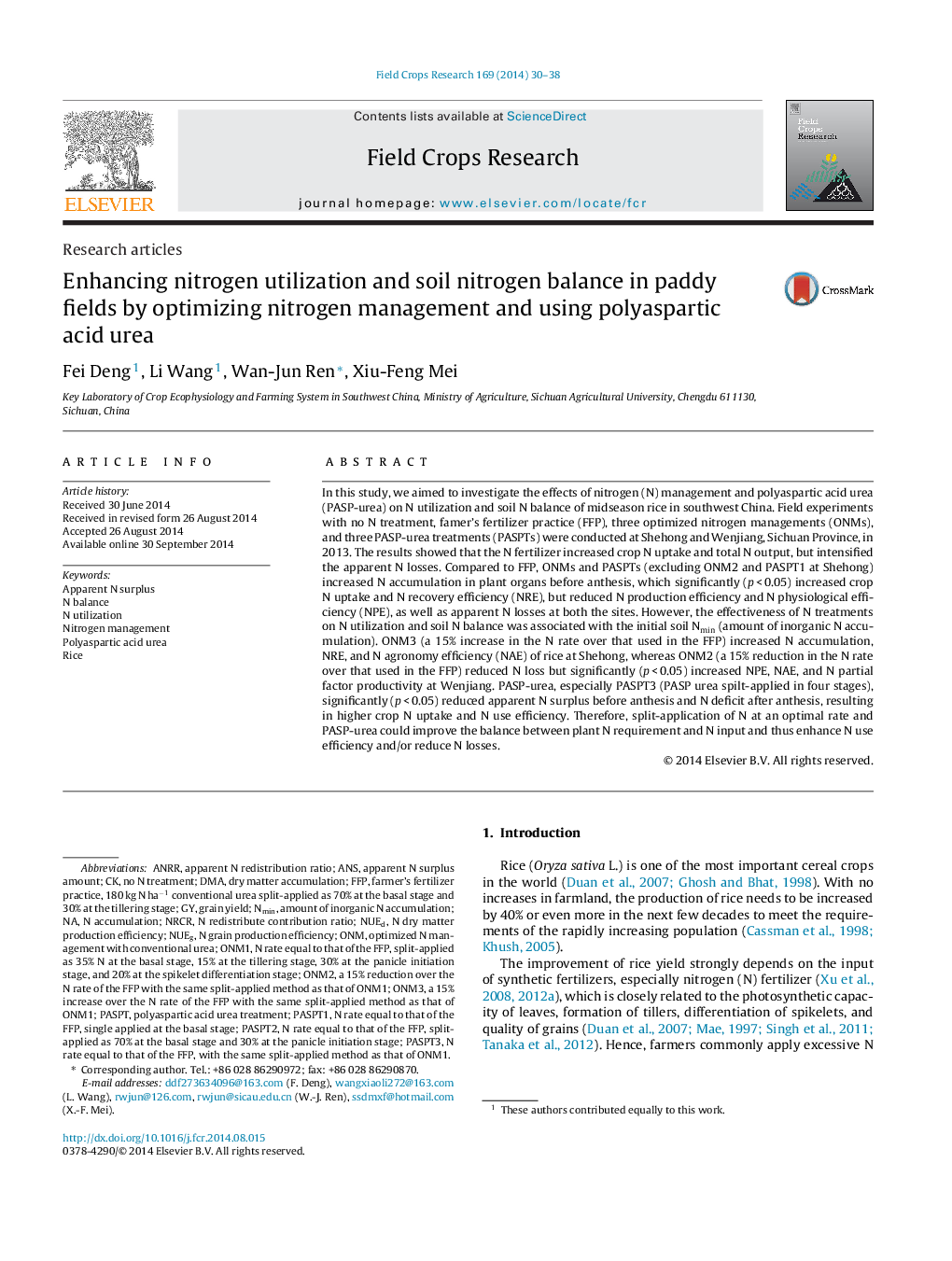| Article ID | Journal | Published Year | Pages | File Type |
|---|---|---|---|---|
| 4509945 | Field Crops Research | 2014 | 9 Pages |
•The ONM and PASPT treatments improve crop N uptake and NRE.•ONM3 increases the N accumulation, NRE and NAE of rice at Shehong.•ONM2 reduces ANS, but increases NPE, NAE, and PFP at Wenjiang.•PASPT3 possesses a higher crop N uptake and N use efficiency in both sites.
In this study, we aimed to investigate the effects of nitrogen (N) management and polyaspartic acid urea (PASP-urea) on N utilization and soil N balance of midseason rice in southwest China. Field experiments with no N treatment, famer's fertilizer practice (FFP), three optimized nitrogen managements (ONMs), and three PASP-urea treatments (PASPTs) were conducted at Shehong and Wenjiang, Sichuan Province, in 2013. The results showed that the N fertilizer increased crop N uptake and total N output, but intensified the apparent N losses. Compared to FFP, ONMs and PASPTs (excluding ONM2 and PASPT1 at Shehong) increased N accumulation in plant organs before anthesis, which significantly (p < 0.05) increased crop N uptake and N recovery efficiency (NRE), but reduced N production efficiency and N physiological efficiency (NPE), as well as apparent N losses at both the sites. However, the effectiveness of N treatments on N utilization and soil N balance was associated with the initial soil Nmin (amount of inorganic N accumulation). ONM3 (a 15% increase in the N rate over that used in the FFP) increased N accumulation, NRE, and N agronomy efficiency (NAE) of rice at Shehong, whereas ONM2 (a 15% reduction in the N rate over that used in the FFP) reduced N loss but significantly (p < 0.05) increased NPE, NAE, and N partial factor productivity at Wenjiang. PASP-urea, especially PASPT3 (PASP urea spilt-applied in four stages), significantly (p < 0.05) reduced apparent N surplus before anthesis and N deficit after anthesis, resulting in higher crop N uptake and N use efficiency. Therefore, split-application of N at an optimal rate and PASP-urea could improve the balance between plant N requirement and N input and thus enhance N use efficiency and/or reduce N losses.
